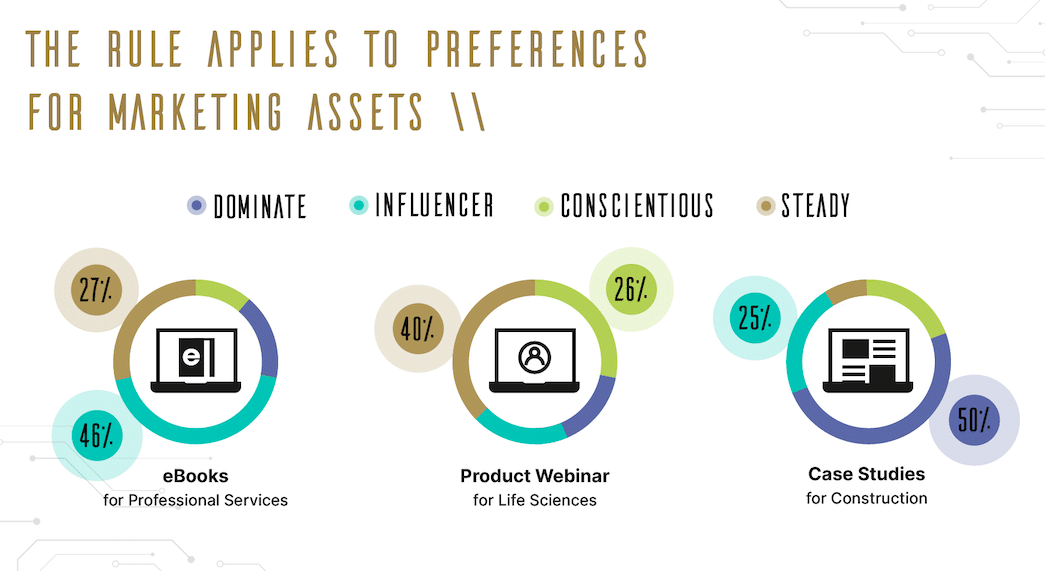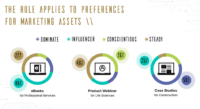
“You’re damned if you do and damned if you don’t.” This expression applies when trying to create and execute personalized campaigns.
If you go too deep into understanding prospects’ or customers’ needs and preferences, you can’t scale the campaign. If you go too shallow, then the message lacks relevance and connection to buyers. It’s a challenge we’ve faced while working with clients over the years.
We can delve deeply into understanding buyers’ preferences and motivations, creating truly personalized offers, but we are limited by our ability to do it at scale. That was until we discovered the 65/75 rule.
Understanding the 65/75 rule: Birds of a feather in B2B
At its core, the 65/75 rule exists because birds of a feather actually do flock together. People with similar personalities are drawn to work in certain industries, roles and organizations. Not only that, they also learn, shop and buy products and services in very similar ways.
After years of researching and profiling the personalities of tens of thousands of buyers, we have found that for at least 65% of industries, companies and roles are comprised of two dominant personality types (using the DISC personality type indicator).
In some areas, it was higher. For example, we found that 53% of the CEOs of Fortune 500 companies have the same personality type. Up to 65% of the chief information and security officers (CISOs) in the financial services industry also have the same personality type.
The more advanced degrees (or professional certifications) a person has, the more likely it is to reflect their personality type. Said differently, your personality will often dictate the profession you pick or pursue. If you are unhappy in your current position, it may go deeper than just the job and/or manager. It may be at odds with your personality.
Dig deeper: How to use AI personality profiling for B2B engagement
Applying personality insights to marketing strategies
Discovering this insight taught us that personality types have preferences in how they learn and consume information. Influencers (the “I” in DISC) were fond of light, quick information like animated videos and infographics. Often, their motivations were to seek new information to share with others — hence the term “influencer.”
The same applies to how personality types consume certain content assets (case studies, white papers, videos, etc.). Combining this insight with the insights on industries, companies and roles, we can now build out specific assets to attract the exact audiences we are targeting.
We can use the right “bait” based on the body of water and the type of fish we want to catch.

Identifying high-value buyers: The ‘mobilizer’ challenge
Years ago, Pat Spenner, co-author of “The Challenger Customer,” and I sought to find a way to target and attract “mobilizers,” a type of buyer identified in the book’s research. These buyers played various roles within the buying group, and two types were of particular interest and value to sales and marketers. These individuals were more likely to be motivated to start or lead a buying journey.
We understood their personality attributes but couldn’t figure out how to target and attract them. In a sense, we knew the fish we wanted to catch but not the best lure to catch them. At the time, we lacked the data and technology to solve this mystery which had existed for years.
Today, thanks to predictive and generative AI, we have the answers. Those “high-value” mobilizers can now be identified by their personality traits. Understanding their personalities allows us to find them in specific industries, companies and roles.
Crafting content for specific personality types with AI’s help
Knowing who these mobilizers are gives us insight into how to speak to them personally and do it at scale. AI tools can be trained to create content in their preferred language. Engagement data matched with personality type guides us to their preferred sales and marketing assets (case studies, videos, etc).
For the Conscientious (the “C” in DISC who are prone to being “skeptics”), we use data and research-backed content in an analytical tone. To play that out and catch the fish (CISOs) in the body of water (financial services industry), we’ve identified the bait (research and data-backed content). It’s not 100% certain they will “bite,” but they are more likely to engage.
This brings up another interesting insight into personality behaviors. For the skeptics I just mentioned, credibility is everything. Their top four information sources are people-to-people channels (peers, analysts, etc.). Even if they don’t bite, you’re not losing credibility by giving them information they may find overly promotional or lacking substance.
The final piece: Marketing at scale using personality data
This leads us to where they will appear in the buying process. The 65/75 rule continues to apply based on the industry. In professional services, for example, 65% to 75% of audiences early in the buying process will be made up of two distinct personality types (the DI of DISC). The middle and end of the journey are the same story. The personality types change with the skeptics showing up late, for example, but the rule is the same.
It is the final piece that completes my fishing analogy. We know where the fish will most likely be in the vast ocean of opportunity. Teaching a marketer to fish (using personality-based marketing described above) can not only “scale” but can also keep the salesforce fed for the year.
Dig deeper: How behavioral economics can be the marketer’s secret weapon
The post Why personality data is key to scalable B2B marketing appeared first on MarTech.










